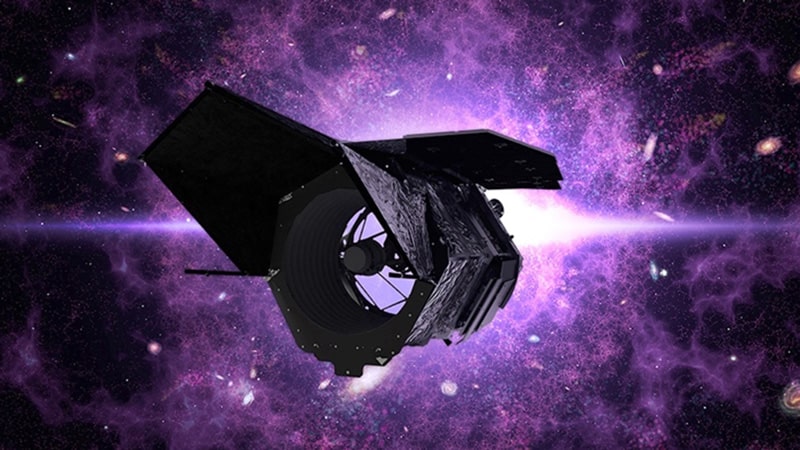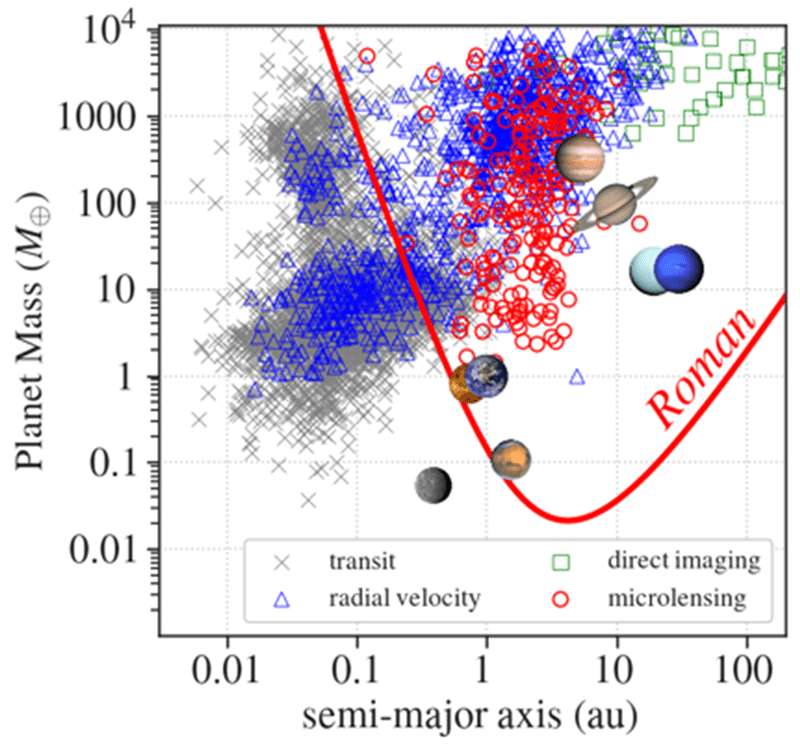New Worlds of Exoplanets Opened Up by the Roman Space Telescope
Feb. 29, 2024 | Aerospace Project Research Associate, ISAS people
Research Summary

About 30 years ago, it became clear that planets exist outside our solar system, and more than 5,000 exoplanets have been discovered so far. However, most of them are scorching hot planets orbiting near their host star, and it is difficult to detect exoplanets resemble those in our solar system, especially earth-like planets, due to limitations in observation accuracy, leaving their distribution unresolved.

The Nancy Grace Roman Space Telescope (hereafter Roman) is a large space telescope with an aperture of 2.4 m, scheduled for launch in 2026 as a NASA's large flagship program (Figure 1). Roman is expected to discover a large number (about ~1400) of cold exoplanets, which have been difficult to detect in the past, and to comprehensively elucidate their distribution (Figure 2). I have been conducting research on microlensing*1 planet searches using ground-based telescopes, and I joined ISAS as an aerospace project associate because I was attracted to the tremendous research results achieved by Roman and wanted to contribute this project. In fact, Japan (ISAS/JAXA) is participating in the Roman project as a member of the international partners, which gives Japan the opportunity to create its own scientific achievements and contributions. Among Japan's some contributions to the Roman project, one that especially relates to the microlensing observation is support for data reception by a JAXA ground station. Roman's microlensing observations require high-precision monitoring of the brightness of hundreds of millions of stars for 72 consecutive days. For this reason, a (very) large volume of observation data is expected, and NASA will build a receiving station dedicated to Roman, but even so, it can only receive less than half of the maximum data collection volume, so international cooperation including JAXA is essential. Therefore, JAXA is developing and installing a new Ka-band (26GHz) high-speed receiving system on the 54m antenna of the Misasa Deep Space Station (MDSS) in Nagano, Japan. This is very important in terms of maximizing the scientific results of Roman achieved through microlensing observations and is also beneficial from the perspective of improving JAXA's environment for future scientific satellites with larger data volumes. In addition to these contributions, there are other paths for Japanese researchers to join Roman's science review teams and directly contribute to the optimization of the observation strategy. For example, I am a member of the Roman science teams for microlensing and coronagraphic*2 observations, and we are about to start the full-scale discussions for finalization.
I feel that participating in the Roman project as an aerospace project associate of ISAS is very meaningful in that I can make a deep contribution to the fundamental aspects of Roman, which will produce great scientific results in the fields in which I am interested, and in the project I can try to produce unique scientific results. In addition, by being deeply involved in the promotion of large-scale projects that require overseas cooperation, I feel that I am learning experience and know-how that I cannot obtain elsewhere. I would like to make the most of these experiences for future super-large-scale projects after the Roman project.
Terminologies
- *1 The "microlensing" method detects exoplanets using the phenomenon that the brightness of a star changes under the influence of the gravity of a planetary system. The detection sensitivity is high for exoplanets in orbital regions somewhat distant from the host star.
- *2 The term "coronagraph" refers to an instrument for imaging celestial objects (planets and disks) around a primary star by suppressing its brightness. Roman is equipped with a coronagraphic instrument as a technology demonstrator for direct imaging of exoplanets.


 MIYAZAKI Shota / Laboratory of Infrared Astrophysics, Dept. of Solar System Sciences, ISAS
MIYAZAKI Shota / Laboratory of Infrared Astrophysics, Dept. of Solar System Sciences, ISAS